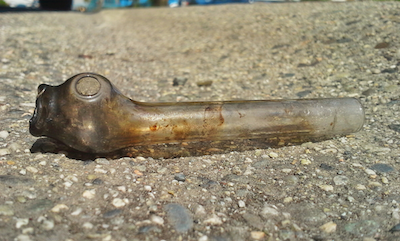Adolescent Cocaine Use Increasing Again.
 Adolescent cocaine use peaked in the mid-1980s before declining sharply in the early 1990s, leading researchers to focus on adolescent use of alcohol, tobacco, and marijuana.
Adolescent cocaine use peaked in the mid-1980s before declining sharply in the early 1990s, leading researchers to focus on adolescent use of alcohol, tobacco, and marijuana.
But rates of adolescent cocaine use are on the rise again, according to a new study co-authored by a School of Public Health researcher, signaling the need for better public health efforts to understand these new trends and develop effective solutions.
The nationally representative study, published in Drug and Alcohol Dependence, found adolescent cocaine use increased from 2009 to 2015, after a general decline since the 1990s. Breaking down the data by race and sex, the study found Hispanic boys had the highest rate of cocaine use, but that the increase was most dramatic among black boys, 5.34 percent of whom had ever used cocaine by 2015, exceeding the rate of white boys for the first time.
“Cocaine use among adolescents has severe adverse consequences,” including substance use disorders, mental illness, low educational achievement, and incarceration, says study co-author Ziming Xuan, associate professor of community health sciences.
The researchers used data from the Centers for Disease Control and Prevention Youth Risk Behaviors Surveillance System, which monitors health risk behaviors among US high school students. The survey asks, “During your life, how many times have you used any form of cocaine, including powder, crack, or freebase?” The researchers looked at how many respondents had ever used cocaine, and how many had used cocaine three or more times.
Consistent with previous research on adolescent substance use, the researchers found boys were more likely to have ever used cocaine and to repeatedly use cocaine than girls.
Overall, adolescent cocaine use has decreased dramatically since 1999, with 9.54 percent of adolescents having ever used cocaine in 1999 compared to 5.19 percent in 2015, and 5.13 percent of adolescents repeated using cocaine in 1999 compared to 2.84 percent in 2015. However, the researchers found the decline leveled off in the 2000s, and began to increase again around 2009.
Black adolescents’ cocaine use had a different pattern, with the rate for black girls remaining consistently low from 1999 to 2015, and the rate for black boys consistently low from 1999 before rising in the late 2000s to 2015.
Asian adolescents had the lowest prevalence of ever having used cocaine, while American Indian/Alaskan Native, Native Hawaiian/Pacific Islander, and Hispanic adolescents had the highest. However, the authors wrote that American Indian/Alaska Native and Native Hawaiian/Pacific Islander sample sizes were too small to properly explore trends in cocaine use.
“Thus, trends among some of the highest risk groups were not analyzed,” the authors wrote. “This demonstrates that there is a need to collect more comprehensive data on substance use among racial/ethnic groups with small population sizes.”